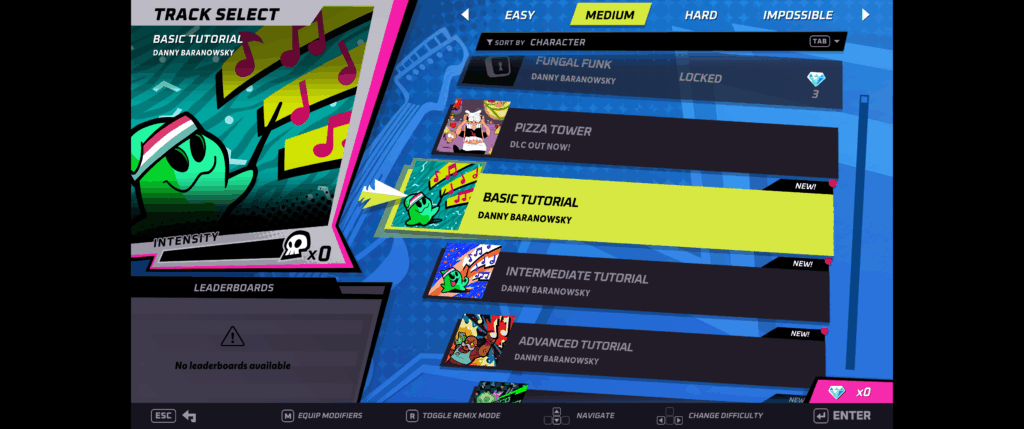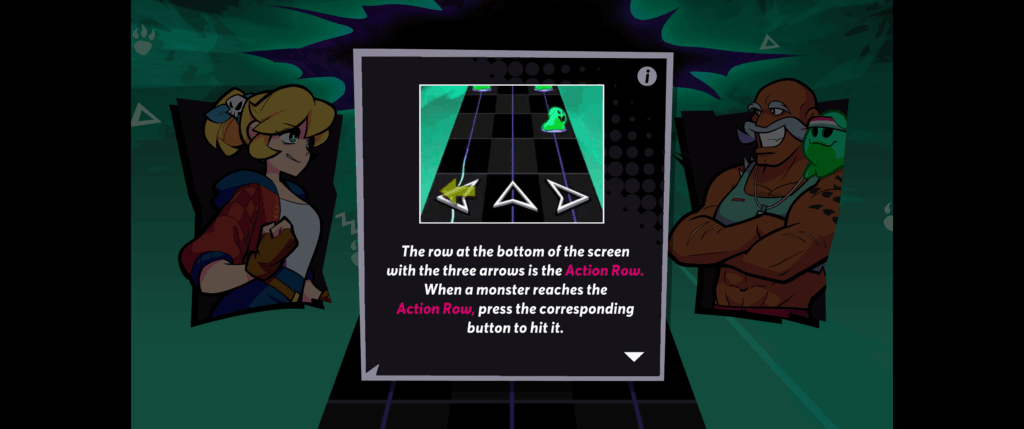Introduction: A Rift in Rhythm
In 2015, the genre-defining Crypt of the NecroDancer was released and turned roguelike conventions on their head with beat-matching dungeon crawling; expectations for its follow-up were high. Cadence of Hyrule was our first jump into this series and we loved it, so we’ve been waiting for more from Brace Yourself Games. Their latest entry, Rift of the NecroDancer, however, takes a sharp detour—eschewing procedurally generated dungeons for a rhythm-based, lane-style action experience, more akin to Guitar Hero than Binding of Isaac. It’s a bold swing, one that trades permadeath for progression, and caves for… coffee shops?

This is hard for me, as Crypt of the NecroDancer and its Zelda-skinned Cadence of Hyrule entries were some of our favorites in this interesting rhythm genre. Cadence of Hyrule, in particular, was one of the most challenging and fun dungeon crawlers precisely because of its rhythm elements, which we never thought we would enjoy but ended up loving. So this stark departure back into a lane style game had us worried that we would not enjoy the entry.

Developed by Brace Yourself Games, Rift isn’t so much a sequel as it is a genre-shifted spin-off. While the new format sacrifices some of the cohesion and novelty of the original, the sheer variety and polish make it hard to resist. But does it drop the mic—or drop the ball?
Gameplay: Rhythm Refined
At the heart of Rift are its Rhythm Rifts—the primary game mode that plays like a beat-based twist on lane defense. Enemies (a.k.a. musical “notes”) move down three vertical lanes in time with a pulsing soundtrack, and each has its own pattern: one-hit slimes, two-hit skeletons, lane-hopping harpies, and even split-form bosses that echo bullet-hell intensity. You’ll be matching inputs to directions with precision, but unlike traditional rhythm games, enemy behaviors demand constant adaptation and pattern recognition.

There’s a surprising amount of variety: some levels introduce new enemy types with distinct movement patterns, while others shake things up with boss fights that feel like interactive music videos. Interspersed are mini-game “Rift Mode” sequences—like rhythm yoga or food prep—that bring much-needed levity and variety to the otherwise intense beat battles. The sheer nostalgia of Guitar Hero and Crypt together actually comes together quite well. We normally loathe rhythm games, but this soundtrack is killer and extremely fun to play.
You aren’t just listening to an amazing soundtrack either; the game demands attention, and its mechanics are never dull. Difficulty ramps appropriately, but newcomers may struggle if they don’t already have rhythm-game muscle memory. Fortunately, accessibility options and multiple difficulty levels help soften the learning curve. Cadence can take up to 10 hits before being KO’d, but healing food and the meter-based Vibe Power system (a temporary invincibility burst) help you survive longer sets.
Presentation: A Neon Groove
Visually, Rift pops with colorful, cartoonish animation and bold 2.5D aesthetics. It retains the pixel art charm of the original NecroDancer while modernizing its interface. Character animations are lively and expressive, and enemy designs remain fun, even when you’re desperately trying to remember whether the two-step slime hops on beat two or four.

The soundtrack, composed by the ever-reliable Danny Baranowsky, is pure fire. It’s arguably the main attraction, blending EDM, chiptune, and synthrock into pulse-pounding tracks that elevate the gameplay from decent to thrilling. Syncing your moves to a bass drop still feels as good as ever.
The mini-games, clearly inspired by Rhythm Heaven, are charming but not as mechanically rich as Rhythm Rifts. Still, they’re effective palate cleansers. The boss fights, on the other hand, are a standout. Presented with Elite Beat Agents–style timing challenges, these encounters blend pattern recognition with QTE precision. They don’t match the adrenaline of core tracks but offer a welcome variety and a different rhythm challenge entirely.
Adding even more replayability are Challenge Modes, remix tracks, and custom song support via Steam Workshop. With modifiers like “sudden death” or “no visual cues,” each song becomes its own gauntlet. And thanks to robust community tools, you can inject your favorite VGM bangers into the mix.

However, song variety is somewhat limited at launch, and though multiple styles are represented, players hoping for genre-spanning diversity may need to wait for future updates or DLC.
Narrative & Structure: Daily Life, With a Beat
Cadence and friends have been pulled into our world by dimensional rifts, and their quest to return home becomes an excuse for everything from fast-food serving mini-games to yoga-pose matchups and mole-suit dance battles. Between music levels, Cadence navigates a quirky slice-of-life narrative involving roommates, yoga sessions, and part-time jobs—complete with fully animated cutscenes. It’s more Persona than NecroDancer, and while charming, it’s not particularly deep.

Story beats serve mostly as connective tissue to justify the genre-hopping gameplay segments. The writing is light, fun, and occasionally laugh-out-loud, but it doesn’t try to dig too deep, and that’s fine. This is a rhythm game, not a character study.
Performance & Polish
Tested on both PC and Steam Deck, Rift runs smoothly, with tight input timing and zero crashes or audio desyncs. The game’s UI is clean and responsive, and load times are minimal. The one caveat is that button mapping is limited out of the box; players using custom rhythm controllers or arcade pads might find remapping to be restrictive at first.
Control and sync options are incredible and the game does its best to match your latency, controller inputs, and your speed. This is not to say it holds your hand – at all – in fact it can be quite punishing and that’s its charm. The developer however, did an amazing job and at making sure your “start” in the game is as clean as can be. From colorblind support to toggles for visual effects, Rift delivers an impressive accessibility suite. It even checks your display and audio latency on first boot to calibrate input timing. This level of technical polish ensures players aren’t punished by hardware quirks—a key detail in a genre where timing is everything.

Steam Deck users should note that while the game plays well, smaller text and fast-moving visuals may make the handheld experience slightly more challenging without headphones and a controller setup. The ROG ALLY X handles this game pretty well too, both handhelds are great for this game and this is a game we will likely always have downloaded.
Verdict: Cadence Finds a New Groove
Rating: 8 / 10 – Great
“Rift of the NecroDancer trades crypts for clubs and lands a combo that’s catchy, clever, and surprisingly diverse. It’s not the hardcore roguelike follow-up some fans expected, but it finds its own beat—and dances confidently to it.”
For fans of rhythm games, this is a must-play. For roguelike diehards, it might be a step out of sync—but one worth taking if you’re open to a genre-blending jam session. Whether you’re squashing monsters to a pulse-pounding metal groove, dodging notes in a dance-off, or laughing at a yoga mini-game, Rift proves rhythm games still have room to evolve. It may be a different tempo from its predecessor, but it’s no less in tune with what makes the genre special.
Now, please, the world NEEDS Cadence of Hyrule 2!
Rift of the NecroDancer: Rift of the NecroDancer trades crypts for clubs and lands a combo that’s catchy, clever, and surprisingly diverse. It’s not the hardcore roguelike follow-up some fans expected, but it finds its own beat—and dances confidently to it. – Mario Vasquez